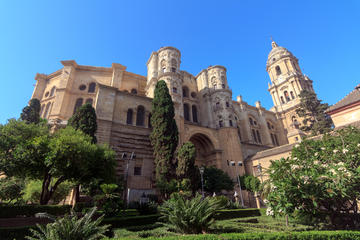Cathedral de la Encarnación
TIME : 2016/2/22 14:08:05

Cathedral de la Encarnación
Málaga’s gleaming white-stone cathedral was built over many years on the former site of a mosque after Isabella and Ferdinand had expelled the Moors from Andalusia in the 1480s. All that is now left of the mosque is the pretty Patio de los Naranjos, still filled with sweet-smelling orange trees. The cathedral is affectionately known locally as
La Manquita (the one-armed lady) as it only has one – granted very elaborate and Baroque – bell tower. The other tower stands stunted and half-finished and the cathedral façade was never completed due to lack of civic funds; no-one is sure why but it may have been that funds were diverted into other projects across the region after a massive earthquake in 1680.
The original architect of the cathedral was Diego de Siloe and construction began in 1528; it continued slowly over the next two and a half centuries and this can clearly be seen in the mish-mash of Gothic, Renaissance and Baroque architecture on the façade. The architecture José Martín de Aldehuela, who built the Puente Nuevo in Ronda, also had a hand in finishing this cathedral.
The interior is a mix of gleaming Renaissance and Baroque elements, with a lavishly ornate vaulted ceiling and two massive organs that boast 4,000 pipes between them. The fine 17th-century choir is of mahogany and cedar, adorned with 42 sculptures of saints designed by Luis Ortiz da Bargas and Pedro de Mena.
Adjacent to the cathedral is the smaller, 15th-century Iglesia del Sagrano. Only its original Gothic portico now remains as it was largely rebuilt in 1714 following the 1680 earthquake; it has a wonderfully over-the-top interior. There is a small open-air museum in the cathedral grounds scattered with sculptures by Málaga artist Jorge Rando.
Practical Info
Málaga Cathedral is in the historic center of the city, where parking is difficult. For drivers, the nearest parking is at Plaza María Guerrero. The cathedral and museum are open Monday-Saturday 10am-5pm but closed on Sunday unless for services. There is an admission charge but the open-air museum and gardens are free.
